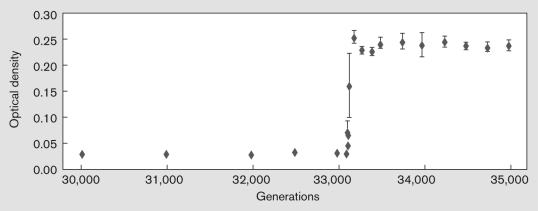Essay
The Long-Term Evolution Experiment (LTEE) has been conducted by Richard Lenski at Michigan State University since 1988. The purpose of the experiment is to observe evolution in action in a laboratory environment. Use the figure below to explain what physiological adaptations allowed one of the Escherichia coli strains to grow to a much higher density after 33,000 generations.

Correct Answer:

Verified
Originally, twelve populations of Escher...View Answer
Unlock this answer now
Get Access to more Verified Answers free of charge
Correct Answer:
Verified
View Answer
Unlock this answer now
Get Access to more Verified Answers free of charge
Q17: Which energy-production reactions were likely to have
Q18: Discuss what horizontal gene transfer is. How
Q19: Appearance of a new trait in experimental
Q20: Explain how banded iron formations could arise
Q21: Four unique sequences have been amplified using
Q23: How can plants be so efficient photosynthetically
Q24: The disease filariasis is caused by the
Q25: Briefly discuss the types of geological evidence
Q26: Evidence in the study of adaptive evolution
Q27: How do membrane compartments spontaneously arise from